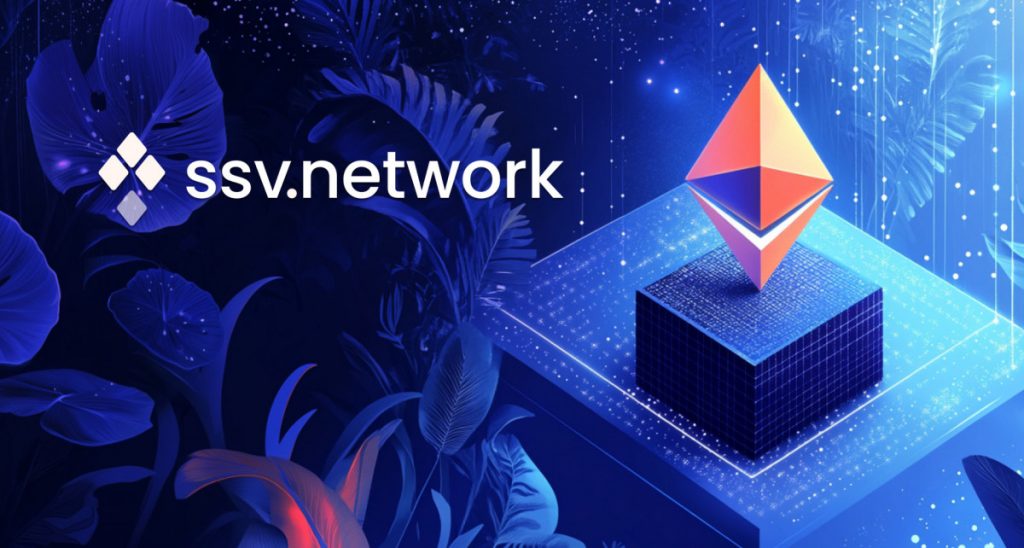The Hidden Infrastructure Powering Ethereum’s Institutional Turn


In Brief
Ethereum’s vision of open finance has been elusive for institutions due to compliance, risk, and tech hurdles, but Distributed Validator Technology from SSV Network is now changing that.

Ethereum has long envisioned a decentralized financial system accessible to everyone, but for institutions, that goal has been difficult to achieve in staking. Compliance issues, operational risks, and technological challenges have kept most major players on the sidelines. However, this situation is gradually changing, not because of a single regulation or market trend, but due to a key piece of infrastructure: Distributed Validator Technology (DVT), developed by SSV Network.
DVT Is More Than Just Infrastructure, But a Staking Philosophy
Primarily, DVT spreads validator operations across multiple node operators, decentralizing the process. This significantly lowers slashing risk, enhances uptime, and eliminates single points of failure, which are critical concerns for institutional-grade staking. What’s truly transformative about DVT isn’t just its technical setup, it’s how it redefines secure, resilient staking in practical terms.
So far, institutions faced a trade-off between custody and performance, as well as control and decentralization. DVT removes this dilemma by offering a shared-staking infrastructure that meets top-tier compliance while upholding Ethereum’s decentralization principles. This makes it more than just a tech upgrade. It’s a crucial gateway.
Regulators Have Delivered Clear Guidance
Recent regulatory developments have improved the outlook for staking in the U.S. The SEC’s position that protocol staking does not qualify as securities eliminates a major barrier. Additionally, legislation such as the GNIUS Act signals that the regulatory environment is aligning with technological advances. The timing aligns perfectly.
While staking ETFs approach, institutional interest in yield is being met with new compliant participation tools. DVT aligns perfectly with this development, providing the necessary safeguards for institutions without undermining Ethereum’s core participatory principles.
The Next Phase for ETH Treasuries
It’s no longer practical for major ETH holders to remain inactive. Funds, treasuries, and exchanges with large ETH holdings are witnessing capital decline due to opportunity costs. With staking now both technically feasible and regulatorily approved, delaying participation is no longer justified.
However, staking involves more than just earning returns. It’s about contributing to the network’s integrity. Institutions that stake are not only earning but also helping to ensure Ethereum’s long-term stability. In an ecosystem rooted in transparency and collaboration, this contribution matters.
SSV Network and the Rise of a Standard
This moment is even more significant because DVT isn’t just a niche experiment — it’s becoming the standard. Currently, over 11% of all staked ETH is protected by SSV Network, and leading protocols like Lido, ether.fi, and Puffer are integrating DVT. This clearly indicates that institutional-grade staking is now a reality.
SSV has quietly established the infrastructure trusted by top protocols. This trust, demonstrated through live mainnet deployments and growing adoption, has made SSV the second-largest Ethereum staking protocol. It wasn’t driven by a desire to dominate, but by the merit of its technology.
Adopting DVT is a clear signal of commitment to security, decentralization, and future-ready staking. For risk-conscious institutions, it shows alignment with Ethereum’s core values and best practices. As staking enters its institutional era, DVT makes that transition inevitable.
Disclaimer
In line with the Trust Project guidelines, please note that the information provided on this page is not intended to be and should not be interpreted as legal, tax, investment, financial, or any other form of advice. It is important to only invest what you can afford to lose and to seek independent financial advice if you have any doubts. For further information, we suggest referring to the terms and conditions as well as the help and support pages provided by the issuer or advertiser. MetaversePost is committed to accurate, unbiased reporting, but market conditions are subject to change without notice.
About The Author
Victoria is a writer on a variety of technology topics including Web3.0, AI and cryptocurrencies. Her extensive experience allows her to write insightful articles for the wider audience.
More articles

Victoria is a writer on a variety of technology topics including Web3.0, AI and cryptocurrencies. Her extensive experience allows her to write insightful articles for the wider audience.

















































